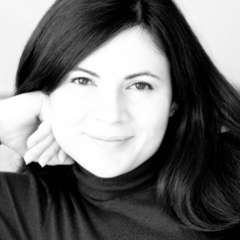Listening to Margherita d’Anjou (1820) one can’t help but wonder at how first the Wagnerian and then the Nazi damnatio memoriae that has stricken Giacomo Meyerbeer’s opus has managed to dissociate his name from the canon of opera up to this very day, and you will generally ponder on the arbitrarity of the surviving opera repertoire. The performance seen at the Festival della Valle d’Itria in Martina Franca was the first staged in modern times. You won’t find many instantly memorable arias, but you witness a constant succession of quietly beautiful moments, which make it worth rediscovering this veritable gem.
Underpinning the success of both the opera and its staging is the strength of Felice Romani's libretto with verses that flow effortlessly both for the rhyming and for their inventiveness and humour. One might have expected a traditional and faithful version of the original, but director Alessandro Talevi wisely thought it necessary to address both historical distance and the opera's weak plot.
The story, based on episodes from the Wars of the Roses, was transposed to contemporary times. Ousted queen Margherita, trying to reconquer the throne, becomes a leading fashion designer. The Scottish and the French armies become fashion followers, while the setting moves between a runway, a reality show production studio and a golf resort.
Talevi’s direction was nothing short than genius. He managed to distill the universal and timeless essence of an opera that, at first approach, might look outdated. Stripping the story of its distant historical context, his interpretation highlighted how unchanging human nature is throughout the centuries. He brought to the fore the psychologies of the characters, chiefly Isaura’s love and jealousy for her husband, Lavarenne, and Lavarenne’s laceration for being in love with both Margherita and Isaura.
Michele Gamautte, the factotum doctor, becomes a reality TV star, helper of troubled relationships. Isaura, as the abandoned wife, follows her husband disguised as a man, while the husband (Lavarenne), here a pop singer, has fallen in love with Margherita. We also spot him in a psychoanalyst clinic confessing his pains. The pastoral scene eulogising the country life as opposed to the urban life is turned into the lounge of a golf and spa resort, with the chorus wearing white robes.
Visually, the emphasis was all on costumes and direction, rather than on the set. The latter was static, but of no detriment of the performance; some tall plants in the background represented the woods, with chairs for the resort lounge in Act 2. Costumes were quite lavish and imaginative. The runway with Renaissance-punk clothes at the start was a clever device to recall the epoch of the original story, while the extensive use of the Scottish kilt recalled the original Scottish location.
From a musical point of view, the trademark of Margherita d’Anjou is an unusual pairing of Italian bel canto and German orchestration. This is especially evident in the music of the aria “Dolci alberghi di pace”, with the first violin to the fore where you feel like you are in the middle of a Beethoven work before Margherita’s voice jumps in. Overall the opera is drenched in Rossini’s music and vocal lines, due to Meyerbeer's long, formative sojourn in Italy.
The cast was of a very high standard, with a mix of Italian and international singers. Gaia Petrone's dramatic mezzo-soprano stood out as Isaura for her rich, velvety voice. The few passages in her role requiring a higher range saw her voice losing a little weight, but this was soon forgotten due to her impeccable execution of the rest of the role.
Russian leggero tenor Anton Rositskiy was a perfect Duca di Lavarenne, consistently pleasing with his voice and acting. Only at the end of his second act aria “Tu che le vie segrete” could have handled the phrasing differently, slowing the tempo. But this and occasional Italian pronunciation issues did not affect a very strong performance.
Soprano Giulia De Blasi had an appealing, warm toned voice as Margherita, delivering some very good moments, but her vocal weight would be better suited to a theatre rather than an open air festival. Also, her handling of the coloratura wasn’t always firm.
Both bass roles were taken by very good singers, Laurence Meikle (Carlo) and Bastian Thomas Kohl (Duca di Glocester). It would be interesting to see the latter in bigger roles in the future.
The star of the show, however, was bass-baritone Marco Filippo Romano. His interpretation of the comic doctor Michele Gamautte – think of a cross between The Barber of Seville and Dr Dulcamara – was, in every way, memorable. His outstanding acting abilities sustained his excellent singing throughout with no exception.
Both this opera and this production deserve to be seen again in theatres.




